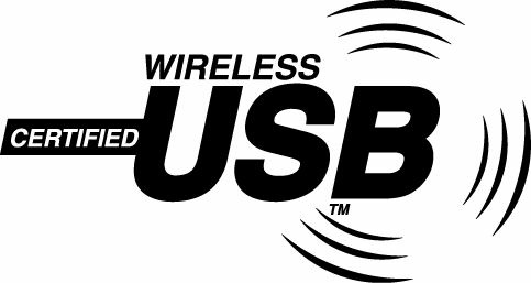Hardware Reference
In-Depth Information
May 12, 2005. Wireless USB 1.1 was introduced on September 29, 2010, and included several
improvements such as UWB support for frequencies 6GHz and above, improved power management,
and support for Near Field Communications (NFC) and proximity-based association, which allows
for easier installation and configuration.
WUSB devices are now certified to conform to the standard by the USB Implementers Forum and
enable high-speed wireless connectivity by adapting USB protocols to the MB-OFDM UWB radio
platform as developed by the WiMedia Alliance. Certified WUSB devices carry the official Wireless
USB logo shown in
Figure 14.13
.
Figure 14.13. The Wireless USB logo carried by devices certified to comply with the Wireless
USB specification.
WUSB uses a portion of the UWB radio spectrum, including 528MHz-wide channels from 3.1GHz to
10.6GHz. These wideband channels allow for high bandwidths up to 480Mbps (60MBps), which
exactly matches the wired USB 2.0 specification in maximum throughput.
WUSB is designed for low power consumption and short-range, high-speed connections, with
performance of 480Mbps (60MBps) at 3 meters (approximately 10 feet), dropping to 110Mbps
(13.75MBps) at 10 meters (approximately 33 feet). This is similar in range to Bluetooth, but at
significantly higher transfer speeds. The radio frequencies used for WUSB are also designed not to
overlap or interfere with the popular 2.4GHz 802.11b/g Wi-Fi and Bluetooth and 5GHz 802.11a Wi-
Fi radios as well as common cordless phones and microwave ovens.
The uses for WUSB are almost endless; basically anything that can be connected via a wired USB
connection can connect wirelessly as well. Existing wired USB devices can even be connected
wirelessly by attaching a special WUSB adapter called a Host Wire Adapter (HWA) on the PC side
and a Device Wire Adapter (DWA) on the peripheral side.
Figure 14.14
shows one possible
configuration for connecting wired devices that way.



